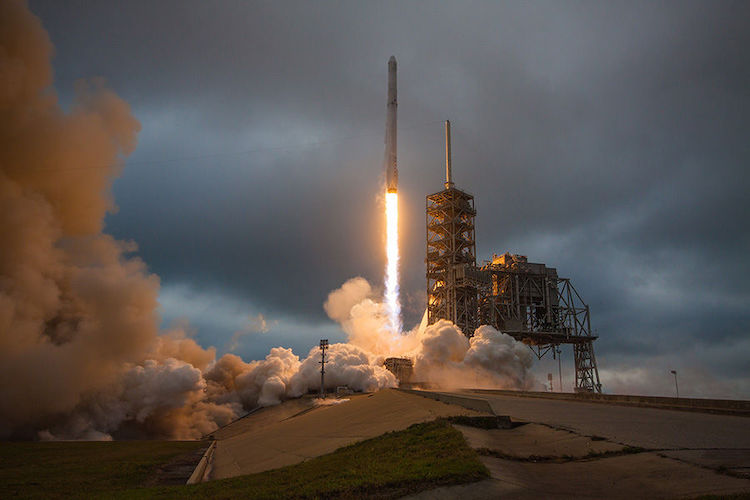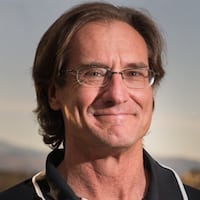50 years after Apollo 11, the nation and world look forward to a multi-pronged space program built on cooperation between NASA and many commercial ventures.
Monumental scenes defined the Sixties: Vietnam, Civil Rights, the “Love Generation,” Woodstock and Monterey, the advent of color TV, the arrival of mainframe computers in large business settings – and the Space Race. Now, 50 years after Neil Armstrong and Buzz Aldrin landed Apollo 11 lunar module Eagle onto Tranquility Base and first walked on the moon, we’re blasting off again.
What a time to be honoring Armstrong, Aldrin, and the other 10 men who walked on the moon. We’re seeing excitement in the space program we haven’t seen since the Apollo era, with four generations involved, from older, nostalgic Apollo observers to robotics-building elementary school kids. Instead of operating under the central mission of beating the Soviets to the moon, we’re now venturing into an expanded program of deep-space exploration with probes and telescopes, near-Earth science and technology in our continued Space Station program, commercial space ventures that involve people and payloads, sustainable manned missions to the moon, and the sexiest ruby red “where no man has gone before” jewel in our astronautic grasp – Mars.
Rather than focusing all experiments and technology on getting to the moon and back – which seized a nation’s consciousness for eight years in the Sixties – we now conduct earth science, medical, robotics, technological, materials development, and many other experiments in space. The technology we developed, then and now, serves our society in thousands of ways. And, we have increasingly deep buy-in from hundreds of commercial space ventures. The scene at May’s Space Tech Expo 2019 at the Pasadena Convention Center, near NASA’s JPL lab (where the Mars missions are monitored) was rife with optimism: more than 250 space industry suppliers showed off everything from missile defense systems to cyro technology and tools for extracting minerals from the moon – or, possibly even Mars.
Today’s excitement reminds over-55 NASA officials, scientists, astronauts, and their partners in government and the commercial space world of what they felt as kids in those dreamy 1960s, when twenty manned missions launched into Earth and lunar orbits – almost all fraught with danger and the unknown.
“The things everyone is talking about today, we talked about then,” former Deputy NASA Administrator and two-time Space Shuttle astronaut Leland Melvin recalled. “Even then (in school), we were drawing pictures of flying cars and landing on Mars on our school folders, and the experts were talking matter-of-fact about Mars being the natural extension of walking on the moon. Since we didn’t have devices and couldn’t go online to look at footage, we had to imagine it, envision it. So my generation was a generation of dreamers.
“The difference is, technology is catching up to us now so we can focus on truly sending manned missions to Mars. I’m confident it can happen in my lifetime.”
Added Apollo 8 flight engineer Poppy Northcutt, the first woman to work in Mission Control during lunar missions, “If I were a young boy or girl today, I’d be as happy as the Baby Boomer kids were in the ‘60s – but kids today have more opportunity to fly later, or work in the space program. I’m really impressed with how robotics and technology are things they already understand.”
The buzz builds every day. For starters, this 50th anniversary year has been far more than a nostalgic tribute to a specific date in time, though that will come July 20. Now, we’re awash with anticipation about a habitable, sustainable workstation growing on the lunar South Pole next decade, including NASA’s goal of sending a manned crew by 2024.
One can hear those test-pilot, Right Stuff old-timer moonwalkers sighing and saying, “Finally.”
Here is what Apollo 11’s Buzz Aldrin, a passionate Mars mission enthusiast throughout, said to this writer in 1993, for One Giant Leap for Mankind, NASA’s 25th anniversary commemorative salute: “I think we’ll go to the poles of the moon first (before Mars). It gives you access to the far side, access to the potential shaded areas and access to some continuous sunlit regions for energy generation. Then we will probably visit the asteroids with robots, to explore the commercial recovery of asteroid material. Then as we’re converting some of this lunar knowledge to the expedition of Mars, I think we’ll have private citizens visiting space.”

Look at Aldrin’s quarter-century-old remarks against a few recent developments:
• Three entrepreneurial titans have entered the commercial space ring big-time. Elon Musk’s Space X has sent dozens of satellites into orbit, including a nest of 60 internet satellites. Along with Virgin Galactic (Richard Branson) and Blue Origin (Jeff Bezos), the trio will be
among those leading the way in commercial spaceflights for private citizens, while Blue Origin is also squarely focused on the South Pole of the Moon.
• In January, China landed its Chang’e 4 lander near the lunar South Pole – the first soft landing ever on the far side. Last year, it was verified that between 10,000 and one million gallons of water lie at the South Pole; difficult to extract, but it’s there.
• Earlier this year, NASA reported great success at exploring unexpected asteroid environments from OSIRIS-REx, the probe that landed on the asteroid Bennu; and Hayabasa 2, a Japanese probe.
• Our anticipation for a Mars mission is on overdrive, with shows like NatGeo Channel’s Mars, the movie The Martian, Stephan Petranek’s book of the same name, the passionate advocacy of Neil deGrasse Tyson’s Cosmos reboot, the curriculum at U.S. Space Camp, and considerable technological work at NASA and private contractors pointing in one direction: we’re going.
• No less than 20 nations now have a space program. In 1969, there were just three nations – the U.S., USSR, and China.
• For the first time in 20 years, money is being poured into NASA and commercial space interests rather than draining from it.
Like his fellow astronauts, Aldrin was chagrined when NASA ended the moon exploration program in 1972, following Eugene Cernan’s final walk on Apollo 17. Their anxiety and concern was evident in 1993, when our space program was at a low point. Apollo 17 commander Gene Cernan, the last man to walk on the moon (and who died in 2017), put it succinctly: “I think I will remain the last man to have left his footprints on the moon for probably another generation, and that’s a sad commentary.”
Make that two generations – and counting.
Further, we’d lost Challenger six years prior, our nation was in a recession, the Cold War (and reason for having a space program) was over, incoming President Clinton promised to cut NASA funds, and our focus was on two new objects in near-earth orbit – the International Space Station and Hubble Telescope, which unlocked the observable universe to us.
A few of their concerns and predictions:
Aldrin: “For a better future, we must relinquish present greed for future greatness. To do that, you first have to have a strategic plan, which we don’t.” (Now, happily, we do).
Apollo 11’s Michael Collins: “Some day in the future, going into space will be extremely important and will definitely change the face of the Earth.”
Apollo 14’s Alan Shepard, also the first American in space in 1961: “Basic research is too abstract for the American public. It’s difficult to specify gain because one thing generates another, but by and large we all benefit from space research. But only the excitement of exploration will turn on the average individual.”
Apollo 12 commander Pete Conrad, the third man to walk on the Moon: “You have to show the public that they are getting some return on their investment. The space program and programs like it are creative programs because they create not only new technology, which also creates new materials, devices, and industries… The space program is like drilling for oil. You might hit a number of dry holes but when you’ve hit, you’ve got a gusher.”
Conrad, who died in 1999, worked passionately toward deeper-space missions. He flew twice on Gemini, commanded Apollo 12, and was our first Skylab commander. He was working on commercial manned launch vehicles at the time of his death, and rumored to be en route to Earth orbit as the second “legacy” astronaut NASA would send for a “thank you” ride (John Glenn being the first, in 1998).
Conrad’s commitment to developing space program technology was fierce, and also pointed to the greatest benefit the program has given us – innovations and tech breakthroughs (see story on page 76), medical and Earth science, and materials development and engineering design. We will see how far we’ve come when we start extruding materials from the moon, asteroids, and Mars to sustain habitation and to refuel missions – beginning with how we treat those native environments.
“How we get at the water, or any other resource, is going to be critical to that planet’s sustainability of us moving forward,” author Antonia Juhasz, a consultant on NatGeo’s Mars series, said. “On Earth, we’ve extracted, polluted, and killed to the point where, even now, the planet cannot sustain most of us in a healthy manner. That’s only happened in the last 150 years of industrialization. Before that, we have thousands of years of living in harmony with our planet; we know how to do it. We can carry that part forward. If we learn that lesson, then we can live on Mars for a very long time – and hopefully, become more sustainable on Earth as well so we maintain and protect this planet.”
As we move ahead, it’s time to stop looking at space travel as a NASA or American launch, or a Russian launch, or a Chinese launch. We’re more than NASA now. On any given launch, products and materials from upwards of a dozen nations are on the trip. Furthermore, commercial space plans are developing just as quickly as NASA’s. It’s time to view our push forward to the moon, and Mars, and our near-earth orbit and deep space efforts as a fleet of missions, built around the driving forces of exploration, discovery, technology development, and our furtherance as a species. Besides Space X, Blue Origin, and Virgin Galactic, new companies making big moves include:
• Space IL, Israel (lunar rover deployment);
• Axiom, USA (space station to replace ISS when it retires in the 2020s; for astronauts, space tourists, and in-orbit research; missions tentatively scheduled to start in late 2019);
• SpacePharma, USA (production of bacteria for help with Earth-borne diseases);
• The Cohu Experience and Space Nation, Finland (open competition to send a space tourist to the ISS to conduct experiments);
• Deep Space Industries, USA, partnering with Luxembourg (mining asteroids for metallic resources, water, and ice for potential way-station refuels on future Mars missions);
• Bigelow Aerospace, USA (constructing portable habitats for astronauts. “We believe crews traveling to the moon, Mars, asteroids, or other destinations could use them as habitable structures or as labs or work areas,” said NASA Project Manager Rajib Dasgupta.);
• Vulcan Aerospace, USA (Orbital launches that rely on high-atmosphere planes to develop small payloads into Earth orbit; founded by the late Microsoft co-founder Paul Allen);
• Odyne Space, USA (Getting nanosatellites into space cheaper by working on more efficient rockets for smaller amounts of cargo);
• Rocket Lab, New Zealand (creation of a launch vehicle designed for manufacture at scale; its first rocket, launched in 2015, cost just $4.9 million);
• Ixion, USA (working with NanoRacks, Space Systems Loral, and the United Launch Alliance to convert upper stages of rockets (which have considerable hollow interior space) into long-term habitable environments for Earth orbit, the moon, or even Mars);
• Firefly Space, USA (light rocket design for nanosatellite payloads of as many as 100 small satellites per mission).
Related: An Inside Look into NatGeo Film “Apollo: Missions to the Moon”
Within these and many other initiatives, the Apollo and Gemini astronauts still alive can enjoy their legacies stretching on new wings. From Aldrin’s Mars fascination to Shepard’s focus on Earth sciences and the environment, from Cernan’s angst over no more manned exploration to Conrad’s determination to press the technology forward, we’re seeing their visions, views, and hopes come to pass.
“I think it’s really important for a society to have optimism and to see a future for itself and be a player in its own destiny. Exploring space is such a perfect metaphor for that,” said Casey Dreier of The Planetary Society. “You have to create new technologies and processes from scratch. You have to work together with other people, internationally. You’re doing it for curiosity, science, maybe extending human presence different than what we’ve done in the past. We have to take care of ourselves – and the act of exploring space will bring that benefit to us. If we can get ourselves together and organize ourselves properly, I feel we will see this in our lifetime.”
What an exciting next 50 years it’s going to be.










